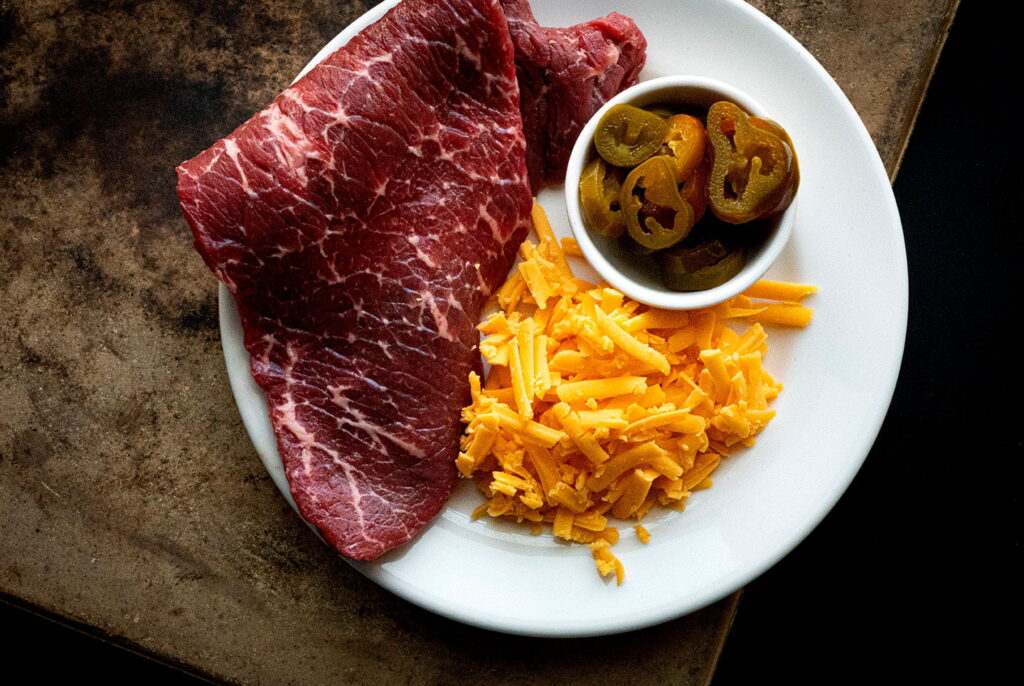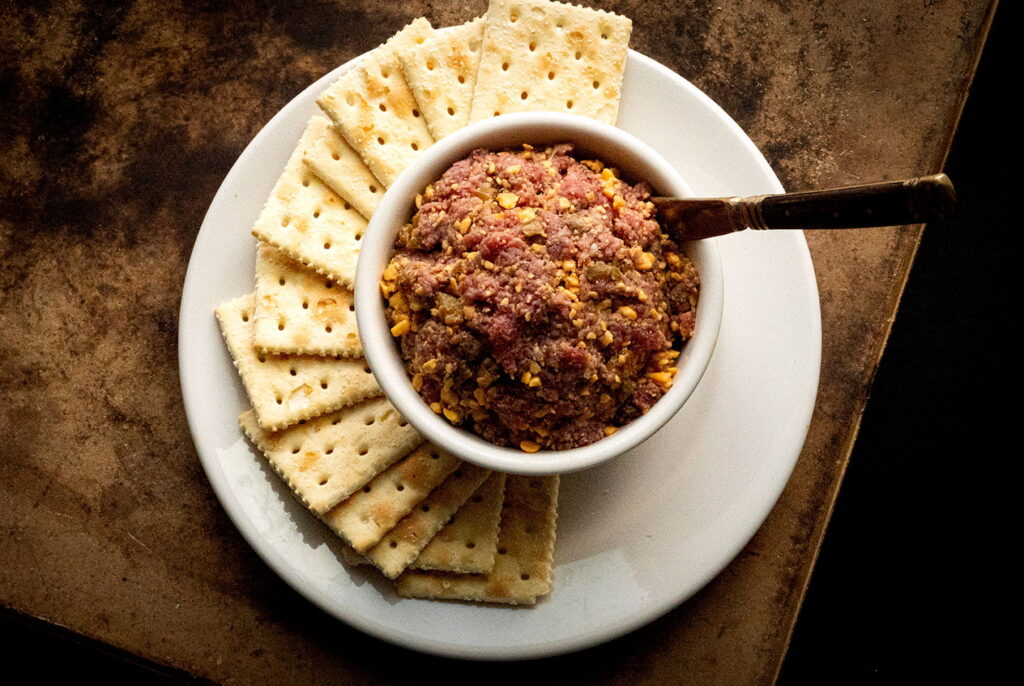The first time someone told me about parisa, I have to admit that I was dubious. Raw ground beef mixed with cheese, jalapeños, and lime juice? Um, no thank you!
My friend, who was from Medina County close to San Antonio, insisted that it was delicious. She suggested that I stop by Dziuk’s meat market in Castroville to try it for myself. A handful was measured out and wrapped in butcher paper. When paying, they handed me a sleeve of saltines.
There were no tables in the market, so I took my meaty package to my car and set up my lunch on the hood. Using the cracker as a scoop, I dipped it into the mound. The blend of rich, mineral-cool beef laced with creamy cheese and piquant green peppers was an exploration of contrasts and while unusual, was welcome. It was a satisfying bite and I soon went back for another.
Parisa is a variation of a dish brought by Alsatian settlers to Castroville and its surrounding towns in Medina Country. Of course, raw beef dishes are found in many cuisines and if you’re a beef lover then you’ll certainly appreciate the flavor and texture of parisa, which is like a pate.

There is no direct analog in the Alsace region of Europe, which straddles France and Germany, but in France, a dish of chopped raw beef is known as tartare. This is said to be named after the Eurasian Tartars who were nomadic and would place beef steaks under their saddles as they rode. By the time the rider dismounted and went to eat his beef, it would be ground into a paste after the jostling and bumping of the horse.
Another name for beef or steak tartare is beefsteak à l’Américaine. This was a reference to the French believing that Americans were so coarse that they would eat their beef raw. This does not explain why the French would consider this dish a delicacy, but the tongue-in-cheek aspect of it is amusing.
Back in Texas, however, the Alsatian raw beef dish became known as parisa. For the most part, the European version and the Texas version are similar, though the Texas version is made with finely chopped or ground sirloin blended with citrus juice, such as lime or lemon, aromatics like chopped onions and garlic, shredded yellow cheese, and seasonings. Because it’s Texas, chopped pickled jalapeños or Serrano chiles are often added, too.
In Europe, the dish is often presented with a raw egg on top, which isn’t done in Texas. And the meat is quickly cured with Worcestershire, too. While you will see parisa recipes with this condiment included, it’s more often not.
Parisa is served with crackers, with the style dependent on which town you find yourself eating the dish. For instance, I’ve heard stories of D’Hanis residents insisting on round buttery crackers with their parisa, while Castroville citizens just down the road prefer square saltines.
While the residents of Medina County say that parisa has been on its tables and in its meat markets since the early 1900s, but the first print citations were in the late 1960s. Its regionalism has been limited to that part of Texas just Southwest of San Antonio until recently when others began to embrace this beef dish.
These days, it’s served in high-end restaurants, such as Wild Oats in Houston. It also appears in regional Texas cookbooks. But for the most part, unless you’re from that part of the state, you most likely have not eaten it and when you first learn about it, eating seasoned ground beef on a cracker may be a tough sell.
Perhaps eating raw meat is strange to many, but if you use fresh sirloin that you’ve ground yourself, it’s considered safe. The citrus mitigates some of the danger, cooking the meat much like lime juice does for seafood in a ceviche.
As for the name, it does harken back to Paris, though it is a reference to the breadsticks used in the Alsace region to scoop up their beef tartare. The breadsticks are known as pariser, and because it’s an oral language, the “er” was most likely pronounced as an “ah.”
Parisa is a popular addition to the Medina County table during gatherings, and you’ll see it brought out during ball games, holiday dinners, or after a deer hunt, when freshly ground venison is used instead of beef.

The key to making sure that it’s safe is to know the origin of the beef and have it ground before preparing. Sure, the lime juice will help with some of the spooky stuff, but it’s very important to use the freshest, cleanest beef you can find.
—————Would you like more Homesick Texan? Well, I’ve started offering additional recipes for paid subscribers to help with the costs of running the site. While I’m not taking anything away, if you’d like to support Homesick Texan and have access to exclusive, never-seen-before subscriber-only posts, please consider becoming a member; annual subscriptions are as low as $25. Thank you for reading, your consideration, and your support!—————











































